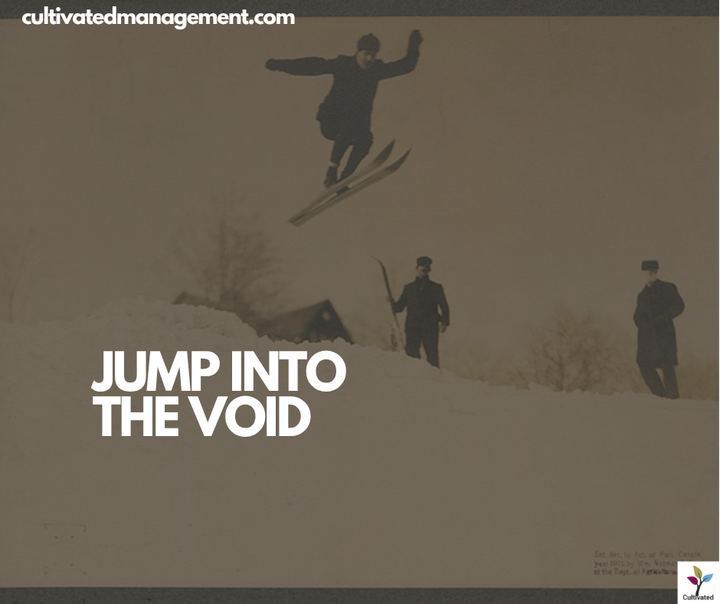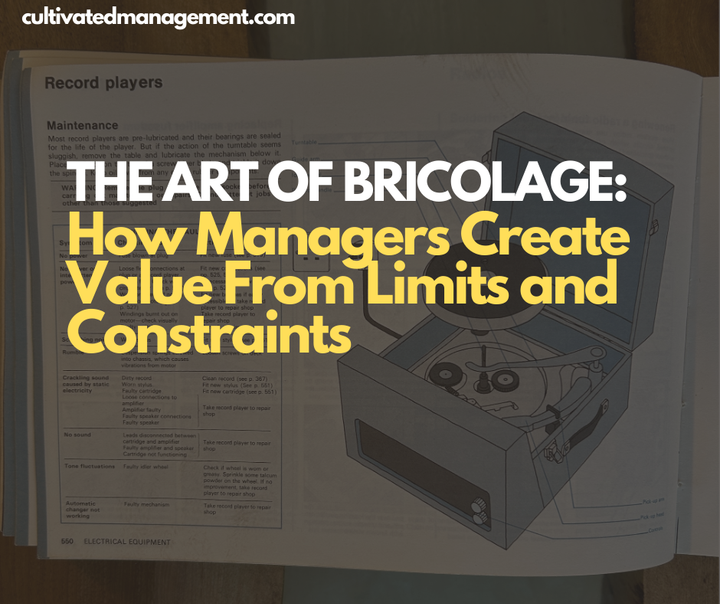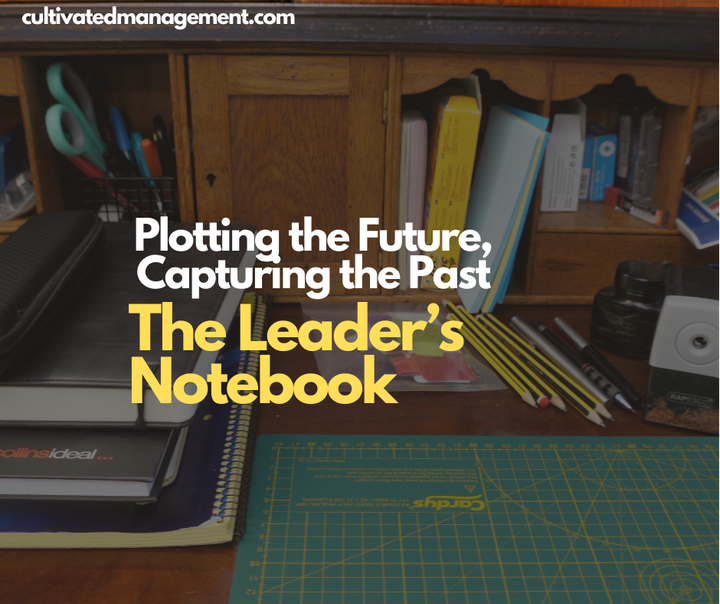Creativity in Business: Why Problem Solving Needs Space, Time and Energy
Discover how creativity in business fuels problem solving, improves wellbeing, and drives innovation through open and closed modes of work.
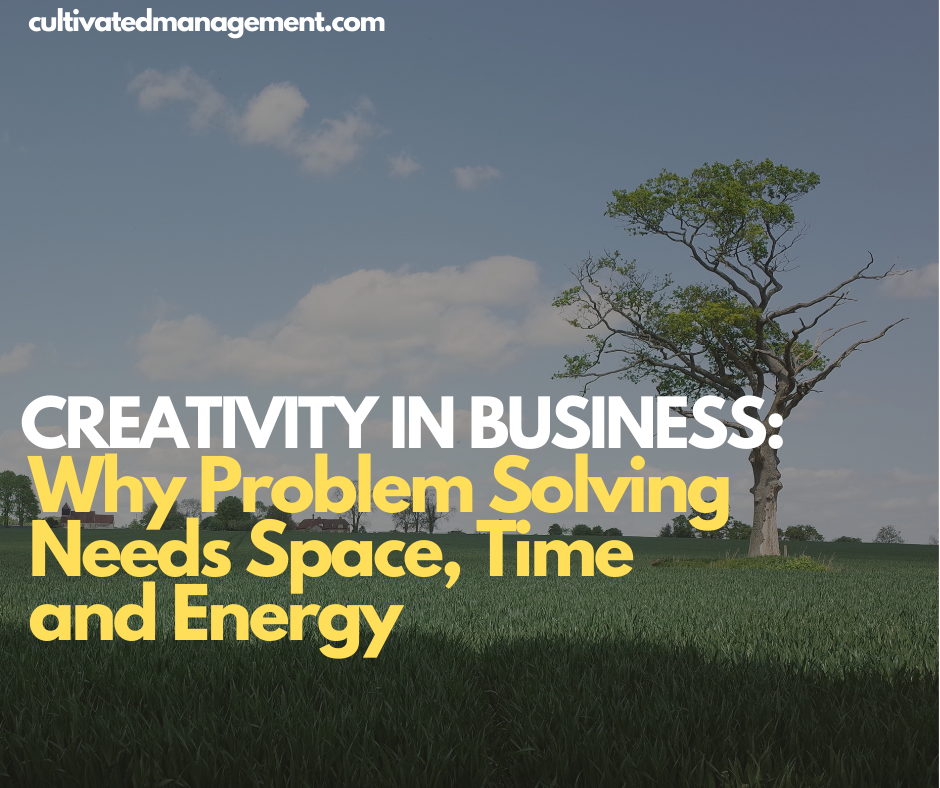
Creativity is an essential part of my life. I’d argue it’s an essential part of any good business too. Without it, problems stay unsolved, opportunities go unseen, and organisations stagnate.
I often describe problems and opportunities as two sides of the same coin. A problem opens up an opportunity. An opportunity inevitably creates new problems. On and on the cycle goes.
Sales slowing in a market? That’s a problem. Expanding into a new region may be the opportunity. But that creates fresh challenges in recruitment, compliance and delivery. Overcome those challenges, and new opportunities appear.

It’s cyclical. Problems create opportunities. Opportunities create problems. If you want your business to move forward, you need creativity to navigate this cycle.
Why Creativity Matters in Business
All companies have problems. Some are energising challenges that galvanise a team. Others are demoralising issues that drag people down. Either way, creativity is the fuel that helps businesses move through them.
Harvard Business School highlights four benefits of creativity in the workplace:
- It encourages innovation
- It improves productivity
- It allows adaptability
- It fosters growth
I’d add a fifth: better job satisfaction.
When people are given the space to be creative, they’re more engaged. They use their natural abilities and intelligences to solve problems, which increases retention, morale, and effectiveness. Creativity doesn’t just make the business better — it makes work better for people too – and retention of good people should be what effective managers and leaders are after.
The problem is that creativity often gets squeezed out. Many organisations relegate it to “creative departments” like marketing. Creativity is seen as something to do, if we have time, or at the end of the project lifecycle.
Some try to shoehorn it into “innovation sprints” — short bursts that suggest creativity can be forced into a calendar slot. Others push it underground, leaving mavericks to carve out space below the radar – btw, this can still lead to great breakthroughs.
But creativity doesn’t work that way. It needs time, space and energy. And most workplaces are too busy solving symptoms, defending work, or wading through bureaucracy to create the conditions for true problem solving.
Problems Are Leadership’s Responsibility
I often get criticised for talking too much about “problems”. People don’t like the word. It sounds negative. They prefer to pass the burden, ignore issues, or patch over symptoms – or, simply label them as something else. But unsolved problems never disappear. They just linger, sometimes for decades, slowing everything down. And every company has way more problems than they can ever realistically address.
The reality is problems belong to leaders and managers. After all, Leaders often create the problems in the first place. They also have the levers to direct attention, energy, people and resources towards solving them. They are paid to make the business more effective and keep good people engaged.
But problem solving is hard. And it requires creativity. Which brings us to the process itself.
The Creative Process: Open and Closed Modes
One of the best ways I’ve found to explain creativity comes from John Cleese. Drawing on the research of Donald McKinnon, Cleese talks about two modes we operate in:
- Closed mode: action, tasks, email, delivery, meetings.
- Open mode: curiosity, wonder, reflection, creative problem solving.
Most of us spend our days in closed mode — focused on delivery and ticking tasks off lists, and going to transactional meetings. But creativity happens in open mode.
Think of how you feel when you’re lying on a beach. No deadlines, no distractions. Just space to wonder. That’s the open mode.
Of course, we can’t all escape to the beach. The challenge is to carve out space and time for open mode inside the workplace, because true creativity requires moving between these two states:
- Open mode for ideas and insights
- Closed mode for execution and delivery
- Back to open mode for testing and iteration
- Back to closed mode for refinement and production
This rhythm — open, closed, open, closed — is the cycle of creativity.
Einstein used it: violin to open his mind, then deep work to test ideas. Churchill used it: resetting his mind by laying bricks. Writers, artists, entrepreneurs all use some form of this. Ideas percolate in open mode, but they come to life in closed mode.
To put it simply; managers and leaders often think we’re too busy to be creative.
The Steps of Creative Problem Solving
Here’s the process I use in my own work and with teams. It’s not a sprint. It’s not quick. But it works.
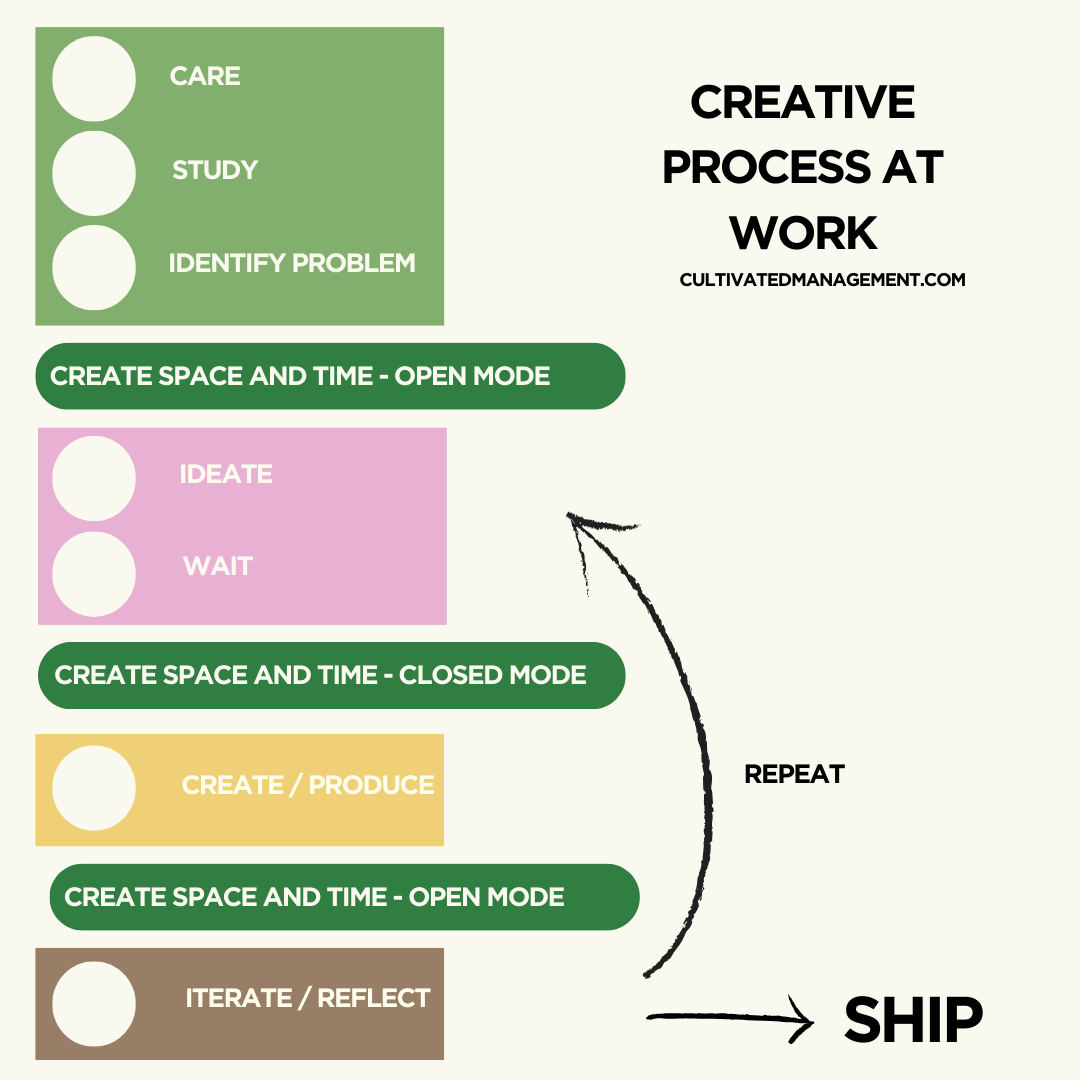
1. Care About Something
Creativity starts with caring. When people care about the business, their team, or their work, they want to make it better. The disengaged don’t bother. The frustrated, vocal, energetic ones? They care. They’re pointing at problems worth solving.
2. Identify the Problem
Ask:
- What problem are we trying to solve?
- Is it worth solving?
Not every irritation deserves deep creative effort. But systemic issues that block progress? They’re worth it.
3. Study and Research
Einstein said to solve a problem you must understand it fully. Gather data, evidence and perspectives. How does the problem manifest? When is it not a problem? How will we know it’s solved? Don’t let study become procrastination — but build a strong foundation of insight.
👉 The Phoenix checklist is a wonderful set of questions to consider asking. If it works for the CIA, the chances are it will work for you too.
4. Create Space and Time
This is where leaders must step up. Cancel something. Clear the calendar. Shift priorities. Without time and space, there is no creativity.
5. Open Mode: Ideation
Enter the open mode. Brainstorm ideas individually first — no judgement, no critique. Then bring them together, mash them, build on them. Divergent thinking first, convergent later.
As much as John Cleese may or may not be getting canceled, his advice on creativity is GOLD. If you don’t object to his sometimes questionable views and comments, spend some time watching this talk. It’s a cracker - and I’d be lying if I said it didn’t inform my own work.
John Cleese, building on Donald McKinnons research, suggests five conditions here:
- Space
- Time
- More time
- Confidence
- Humour
Humour matters. Playfulness and energy are signs the process is working. And you need to have confidence in your ideas and abilities.
6. Procrastinate
Yes, procrastination is part of the process. Step away. Let your subconscious connect the dots. That’s when the “aha” moment strikes — often in the shower, on a walk, or doing something simple.
7. Closed Mode: Production
Now it’s time for deep work. Focus. Deliver. Create the solution in full. This is hard graft. Closed mode is where things get built.
8. Iterate and Reflect
Back into open mode. Test the solution. Get feedback. Check if it really solved the problem. Refine. Iterate. Then close again to deliver the next version.
This is the cycle. Open, closed, open, closed. Wonder, action, wonder, action.
Structuring Creativity in Teams
I once worked with a manager who gave me free rein with this process. Morale improved. Delivery improved. People wanted to solve more problems.
Her instinct was to create a process she could manage, that's what leaders natural want - some form of control and predictability — so we built a simple Kanban board in Trello.
- A backlog for frustrations and problems
- Columns for each step of the creative cycle
- One active problem at a time
It gave her visibility without stifling creativity. It also created a single repository of insights, ideas and solutions — useful for onboarding and reflection.
The important thing here though is not the visibility of frustrations and a board to manage them on, it's the time and space in the process to actually be creative - to ideate and study in the open mode, then lock in and create in the closed mode.
👉 Don't let a process squash that time and space - that's where the magic happens.
The Case for Rethinking Work
When I look at this process, I can’t help but wonder: shouldn’t all work be structured this way?
Yet many organisations keep people in closed mode at 100% capacity — all week, all year, all decade. Constant grind. Growth at all costs. No space to think.
But athletes don’t train at 100% intensity all the time. Creative professionals don’t create 24/7. They move in cycles: rest, intense action, reflection. Businesses should do the same.
Clayton Christensen once explained why innovation drives economic growth — and why efficiency-driven management often kills it. Cutting costs may look good in the short term, but long term it shrinks opportunities. Creativity, on the other hand, creates jobs, growth and resilience.
And some of the ideas that come from opening the doors to creativity can often result in staggering new revenue growth and cost reductions. To manage by costs not only kills creativity but ironically, your costs will likely go up. Try to avoid the efficiency-driven mode of operating a team - stick to purpose instead.
Leaders face a choice: keep grinding in closed mode until people burn out, or build space for open mode so creativity — and solutions — can thrive.
Closing Thoughts
Creativity in business isn’t about brainstorming ideas once a year. It’s about bringing ideas to life to solve real problems, during the working week itself.
If we are serious about making work better, we must:
- Care enough to solve problems
- Define them clearly
- Study them deeply
- Carve out space and time, and time
- Move between open and closed modes
- Deliver tangible solutions
As Edwin Land, founder of Polaroid, put it:
“The ideal business is composed of managers and dreamers, and it is the responsibility of the former to protect the latter.”
👉 Article here about this quote.
Protect creativity. Protect the people doing the work. Carve out the time, time and space for problem solving. Because when creativity thrives, businesses thrive - and so too do people.
Bibliography
30 Ways to Inspire Divergent Thinking [WWW Document], n.d. . Open Colleges. URL https://www.opencolleges.edu.au/blogs/articles/30-ways-to-inspire-divergent-thinking (accessed 6.14.24).Asana, n.d.
What Is Kanban? A Beginner’s Guide for Agile Teams [2024] • Asana [WWW Document]. Asana. URL https://asana.com/resources/what-is-kanban (accessed 7.22.24).Clear, J., 2013.
The Daily Routines of 12 Famous Writers. James Clear. URL https://jamesclear.com/daily-routines-writers (accessed 7.22.24).
John Cleese on Creativity In Management, 2017.
Employee Engagement Trends for HR Leaders [WWW Document]. URL https://www.quantumworkplace.com/future-of-work/employee-engagement-trends (accessed 7.22.24).
Online course - Creative Techniques to Transform Ideas into Texts (Aline Valek) [WWW Document], n.d. . Domestika. URL https://www.domestika.org/en/courses/1981-creative-techniques-to-transform-ideas-into-texts (accessed 7.19.24).Scotch, n.d.
The Phoenix Checklist [WWW Document]. URL https://modelthinkers.com/mental-model/the-phoenix-checklist?type=share (accessed 6.4.24).
The Importance of Creativity in Business | HBS Online [WWW Document], 2022. . Business Insights Blog. URL https://online.hbs.edu/blog/post/importance-of-creativity-in-business (accessed 6.14.24).
The Phoenix Checklist, 2015. . The Social Tester. URL https://thesocialtester8.wordpress.com/the-phoenix-checklist/ (accessed 7.19.24).
The science behind creativity [WWW Document], n.d. . https://www.apa.org. URL https://www.apa.org/monitor/2022/04/cover-science-creativity (accessed 7.1.23).
